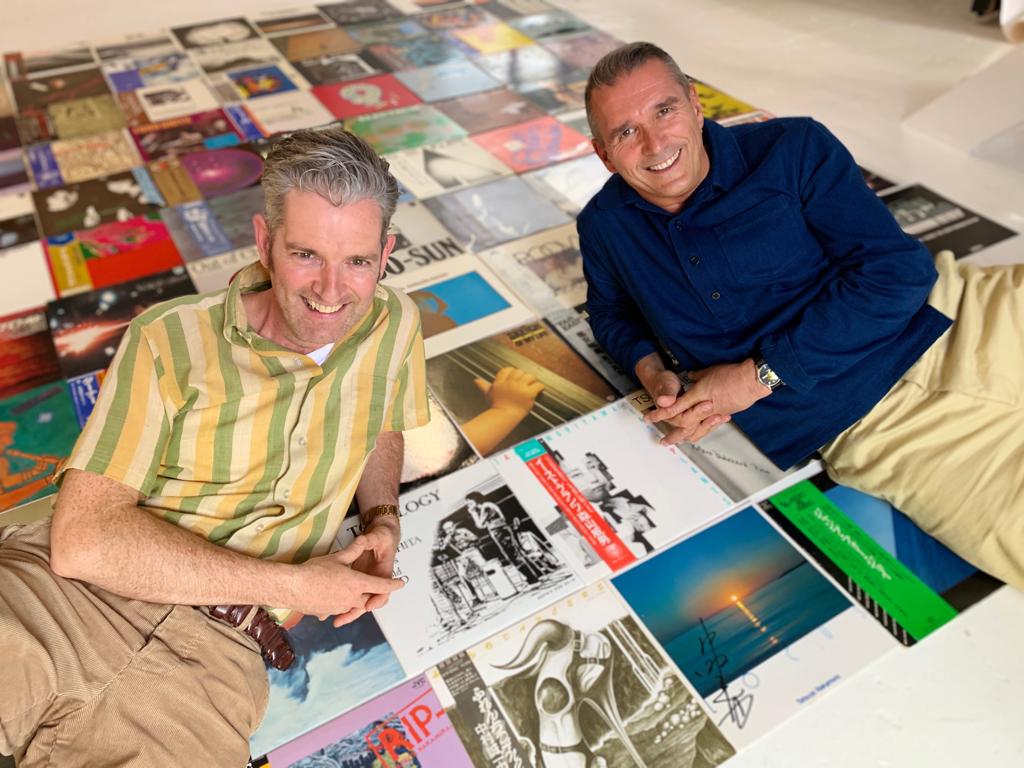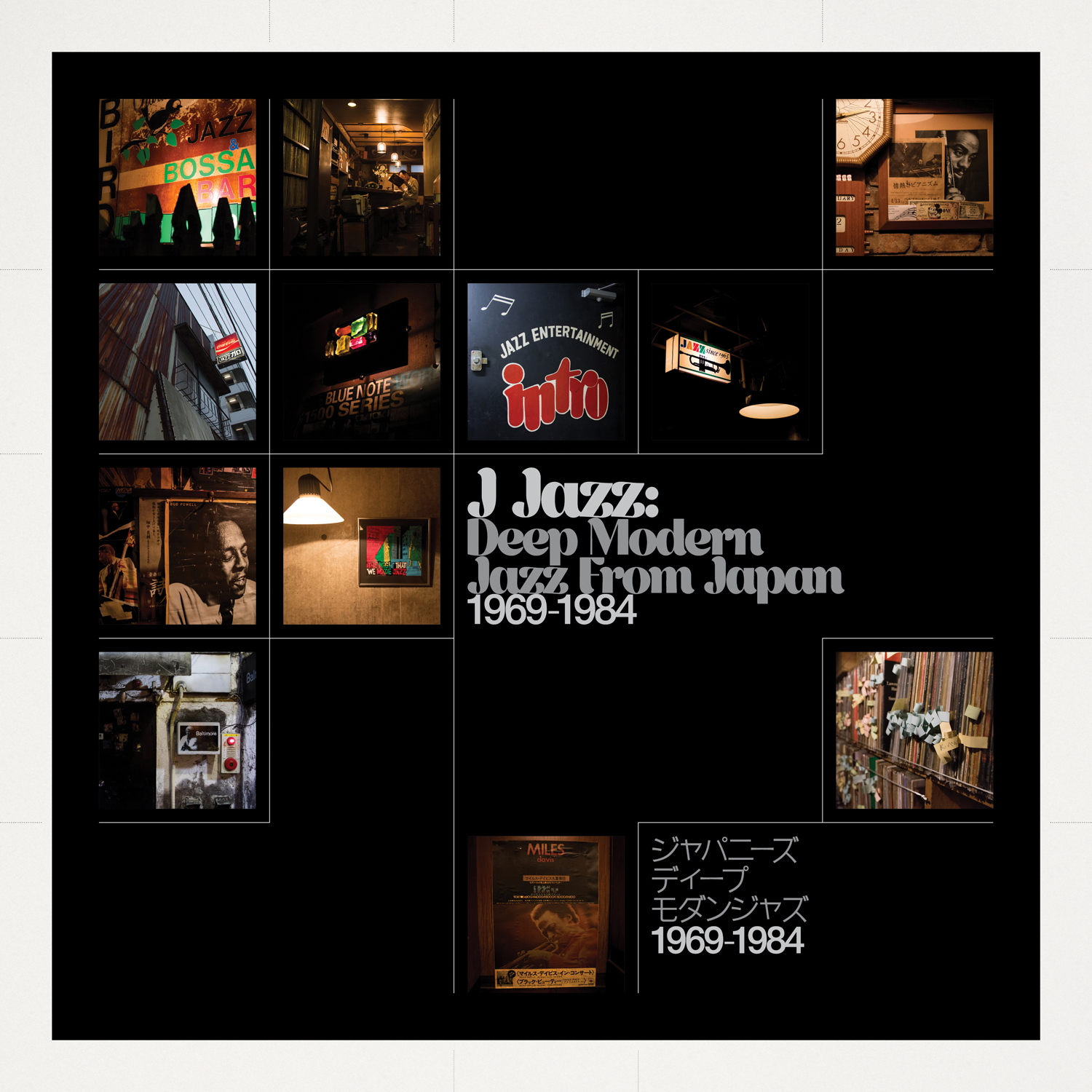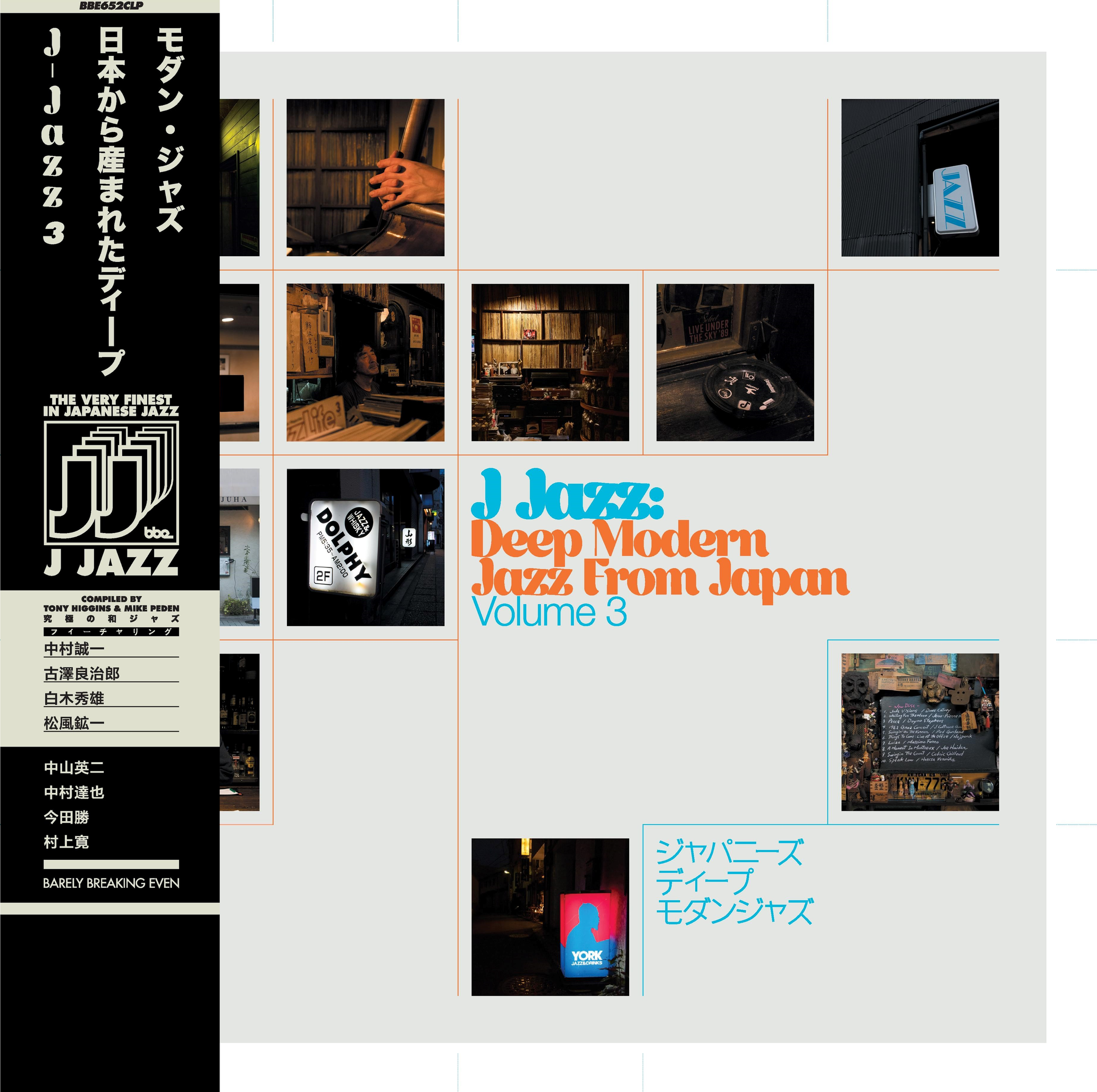In the past, TOKION has brought into the conversation of how Japanese music has influenced the world—such as the American record label, Light In The Attic’s Mark “Frosty” McNeill’s consideration about Japanese city pop in Western countries, the selected records of 1980’s Japanese city pop that the Indonesian band, Ikkubaru, has been influenced by, and the interview with the Korean artist, Night Tempo. Not limited to city pop, but made-in-Japan music in general is gaining attention.
For this article, we are introducing Japanese jazz, or “J Jazz,” that is much lauded in Europe. “J Jazz” is the jazz from 1950’s to 1980’s, rendered by Japanese musicians. The records of “J Jazz” are especially becoming prominent—and its popularity is cultivated by the renowned UK record label, BBE, putting out J Jazz compilation albums. These compilation series are so successful that so far, they have been released from VOL.1 to VOL.3–and the latest in the series, VOL.3, has just came out in March this year, as one of the commemoratives to celebrate the label’s 25th anniversary. I spoke to the curators of the J Jazz series, Tony Higgins and Mike Peden, to unravel the reason why J Jazz is so popular abroad, and their perceptions towards J Jazz.
I’ve realized that the tracks in the compilations are increasing in demand in the world
——Please let me know how you established the J-JAZZ series?
Mike Peden (Hereinafter Mike):My partner in crime Tony Higgins and I are both J Jazz nuts spending hours talking about the merits of different albums, musicians, labels, and Obis. During a lengthy pub crawl the idea of a Japanese Jazz compilation was born. We both put together our dream list of tracks and set some inclusion criteria.
——Can you tell us a bit more about the inclusion criteria?
Mike: It must be Japanese artists & labels, not available or long out of print, realistic chance to license, top quality music and a well-balanced variety of styles, covering as much ground as possible. After a period of discussion and distillation of our choices we arrived at a rough cut of J Jazz Volume 1. J Jazz 2 & 3 followed in much the same way.
We are very fortunate that BBE’s man on the ground in Japan is Kensuke Hidaka, who is a very experienced in the dark arts of licensing and is well connected. However, all 3 volumes took well over a year to complete the licensing process and we had to replace several superb tracks which were impossible to license for a number of reasons—financial issues, non-identifiable copyright holder or, in some cases, the label just said ‘no’. There were many tracks that we could not clear for the compilations due to labels and licensing. If we were able to get all the tracks we wanted, they’d be even better than they are!
——What did you think of the response you received throughout the world with the release of J-JAZZ series?
Tony Higgins (Hereinafter Tony): We’re delighted to say the market has been an international one with sales throughout the world on everything we have done thus far. Obviously, the UK has taken the main share, however BBE has a good distribution network via The Orchard so it means the titles are available in most places, or easy to mail order online. Looking at the numbers, the top 4 countries for sales were USA, Japan, Europe & China (Japanese jazz is big in China and home to a lot of high spending collectors.) J Jazz Volume 1 and 2 sold out of their first vinyl pressing very quickly and BBE had to order a second press which confirmed there’s a market out there eager for this beautiful music. BBE have been fantastic to work with throughout and I don’t think we could have asked for a more supportive label—respect to them for everything they’ve done. It’s a wonderful thing to see the releases we have been involved in on the wall in the branches of Disk Union in Tokyo!
——Can you explain the kind of differences there are between the first 2 compilations and the new one, J Jazz 3?
Mike: We came up with quite a specific sound and track-listing that showcased what we felt were classics as well as a really great introduction to Japanese Jazz. For volume 2, we spread the net much wider and covered most genres in jazz, big band, modal, fusion, funk, or otherwise. There was more variety, more light and shade; but it retained a really tough and exciting non-commercial edge. This time round on volume 3, we kept the same broad spread of styles and further branched out into Okinawan jazz, bossa, and funk, and dug deeper still into the independent and private jazz labels of Japan. So, you’ll find plenty of rare private press action from the likes of Johnny’s Disk, A.S.C.A.P Records, Yupiteru, Planets, Carnival and Sea Horse; plus the incredibly rare Hideyasu Terakawa Quartet’s live track, taken from the only release made on the private label, Red Horison, and which was only available at the band’s gigs.
——What was your criteria when you selected the artists that are included in J Jazz 3?
Mike: We just wanted to include music that we enjoyed and thought was a fair representation of the Japanese jazz scene during a golden period, from the 60s to the 80s. During the times, jazz styles developed at a very fast rate, especially from the late-1960s, when new, younger players emerged trying different things, like electronic instruments and effects. Musicians like Kousuke Mine, Masabumi Kikuchi, and Terumasa Hino. They all started out playing hard bop and blues, but by the early 70s, they were doing post-modal, improvisation, and free work that are really interesting. We also wanted to have a range of styles on the compilation. It would be very easy to fill it with fast heavy fusion but that would be boring. So, we included lots of different styles like hard bop, samba, and modal, as well as materials edging towards free Jazz like Koichi Matsukaze and Ryojiro Furusawa’s “Acoustic Chicken,” which is an amazing 20-minute track from a very rare album.
(BBE)
(BBE)
(BBE)
There is so much more music to be rediscovered in Japan
——Do you think there is a difference between traditional American Modern Jazz artists, beautiful European Jazz artists and Japanese Jazz artists?
Tony: One of the interesting things I’ve noticed about Japanese jazz musicians, especially those from the 1960s and 1970s that we cover on the J Jazz series, is that they can play across many styles and do them all very well. Especially rhythm players—drummers, bassists, and pianists. So, they can play everything from standards and ballads to straight ahead and hard bop to funk, fusion, modal, and freeform improvisation—and do each style equally well. That’s a really fascinating versatility that you don’t tend to see so much of in the US or European players. Obviously, there are great players in the US and Europe who can play across styles, but I don’t think it’s as common as in Japan. US musicians tend to stay within a certain style or set of styles. But many Japanese players have had to learn to play across every style, to stay at work, and keep recording. Don’t forget also, after the war, when the US troops occupied Japan—there were many US bases and Japanese jazz players would play concerts to the US troops on their bases. So, the local players had to be very versatile to play all styles—cool jazz, bebop, jump blues, etc. That versatility developed across the 60s and 70s. The technical ability of Japanese players is extraordinary. Drummers, in particular, are on another level. Brilliant.
——Please let us know about forthcoming releases for this series, projects and activities that you are planning?
Tony: We have many more album reissues to come as part of the J Jazz Masterclass Series, but we don’t want to spoil the surprise by naming them yet. The latest reissue we did just before J Jazz 3 was Shintaro Quintet’s Evolution, which was originally released in 1984. It’s the seventh in the J Jazz Masterclass Series. We are only reissuing the very best albums and it would be nice to get to at least ten. There’s so much music to be rediscovered in Japan—we’ve only just started.
Mike: Every country in the world has had its Jazz plundered, collected, reissued, and compiled—and Japan was really the last frontier. The combination of the language barrier and the lack of accessibility to the records has made it hard for people to get into it and collect it. So hopefully, with these compilations, we will open the door for many more people to enjoy the great jazz that has come out of Japan. Both volumes work as great introductions and a good starting point for people to build their own collections from. More than anything, we hope by sharing the music, we will continue to raise the profile of this previously fairly obscure area of fantastic jazz music.
J-JAZZ VOL.3-DEEP MODERN JAZZ FROM JAPAN
(BBE)
The third complication series featuring numbers of J JAZZ that are highly extolled internationally, including Yasuhiro Kono Trio’s “Song Of Island,” which is also the title of its private press album released in 1986, and Hideo Shiraki’s “Groovy Samba,” recorded in his popular album Plays Bossa Nova, and which overseas DJs like Nicola Conte like to play in their sets. Also, the Okinawa jazzman, Ryusei Tomoyose’s “Kirisame,” the song “Honey Sanba” by Katsuyuki Itakura—who is familiarly known as Katsu— from his rare album Mitsurin Dance, and a variety of songs are coalesced in the album.
Translation Ai Kaneda






